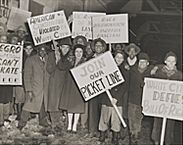| Entries |
| C |
|
Congress of Racial Equality (CORE)
|

|
A reorganized Chicago chapter benefited from CORE's nationally prominent Freedom Rides through the South in 1961. Its efforts to desegregate Chicago public schools brought attention to enduring racial segregation in the North. The movement crested in 1963, when activists moved beyond picketing and petitioning and sat in at the Board of Education to protest the construction of mobile classrooms for overcrowded black schools. Their direct-action protest attracted more working-class blacks, leading the chapter to de-emphasize its Gandhian roots in nonviolence and interracialism. Chairman Robert Lucas, critical of the failure of the Martin Luther King–led open housing campaign to extract concrete concessions from Mayor Richard J. Daley, led a march in Cicero in 1966. The organization was in decline even before the ill-fated march and remained a paper organization through the rest of the 1960s. The Chicago chapter's efforts to address de facto segregation in schools, housing, and employment anticipated and typified the civil rights movement's difficulty in significantly altering entrenched patterns of racial subordination.
The Encyclopedia of Chicago © 2004 The Newberry Library. All Rights Reserved. Portions are copyrighted by other institutions and individuals. Additional information on copyright and permissions.